Classics of Orthodox Spirituality (16 vols.)
Digital Logos Edition
Overview
From the writings of Origen of Alexandria in the second century to Nicodemos of the Holy Mountain in the nineteenth century, this collection contains a wealth of spiritual insight from Orthodox Christianity’s most revered figures. In particular, several volumes delve into the traditional Orthodox form of mystical prayer known as “hesychasm.” Featuring modern-day translations of both classic works and lesser known gems—some of which are translated into English for the first time in this series—these volumes seek to bring readers to a more profound and intimate encounter with God.
In the Logos editions, these volumes are enhanced by amazing functionality. Important terms link to dictionaries, encyclopedias, and a wealth of other resources in your digital library. Perform powerful searches to find exactly what you’re looking for. Take the discussion with you using tablet and mobile apps. With Logos Bible Software, the most efficient and comprehensive research tools are in one place, so you get the most out of your study.
Get expert insight into Orthodox spirituality with the St. Tikhon’s Orthodox Spirituality Collection (8 vols.).

Key Features
- Contains profound spiritual insights spanning all of Christian history
- Includes classic volumes and gems from lesser-known writers
- Surveys Orthodox spirituality through a variety of literary genres
Product Details
- Title: Classics of Orthodox Spirituality
- Publisher: Paulist Press
- Volumes: 16
- Pages: 4,795
- Christian Group: Orthodox
- Resource Type: Anthologies and Readers
- Topic: Spirituality
Individual Titles
- Athanasius: The Life of Antony and the Letter to Marcellinus translated by Robert C. Gregg
- Augustine of Hippo: Selected Writings translated by Mary T. Clark
- Ephrem the Syrian: Hymns translated by Kathleen E. McVey
- Gregory of Nyssa: The Life of Moses translated by Everett Ferguson and Abraham Malherbe
- Gregory Palamas: The Triads edited by John Meyendorff
- John Cassian: Conferences translated by Colm Luibheid
- John Climacus: The Ladder of Divine Ascent translated by Colm Luibheid and Norman Russell
- Maximus Confessor: Selected Writings translated by George C. Berthold
- Nicodemos of the Holy Mountain: A Handbook of Spiritual Counsel translated by Peter A. Chamberas
- Nil Sorsky: The Complete Writings edited by George A. Maloney
- Origen: An Exhortation to Martyrdom, Prayer and Selected Works translated by Rowan A. Greer
- Pseudo-Dionysius: The Complete Works translated by Colm Luibheid
- Pseudo-Macarius: The Fifty Spiritual Homilies and the Great Letter edited by George A. Maloney
- Symeon the New Theologian: The Discourses translated by C.J. de Catanzaro
- The Pilgrim’s Tale edited by Aleksei Pentkovsky
- The Venerable Bede: One the Song of Songs and Selected Writings edited by Arthur G. Holder
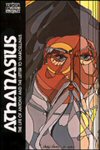
Athanasius—bishop of Alexandria, spiritual master, and theologian—was a major figure of fourth-century Christendom. The Life of Antony is one of the foremost classics of asceticism. The Letter to Marcellinus is an introduction to the spiritual sense of the Psalms.
This translator’s fidelity to the texts ensures that the reader receives in these works Athanasius’ meaning, so far as feasible in the order of his thoughts and in the equivalence of his words.
—William A. Clebsch, professor of religious studies and humanities, Stanford University
Athanasius of Alexandria (AD 296–373) was the 20th bishop of Alexandria. Also known as Athanasius the Great, Athanasius is considered a renowned Christian theologian, a Church Father, and a noted Egyptian leader of the fourth century. Venerated by the Roman Catholic Church, the Oriental and Eastern Churches, the Lutheran Church, and the Anglican Communion, he is celebrated with various high-level honorifics across all of these Christian traditions, including “Father of Orthodoxy” in the Eastern Orthodox Church, Doctor of the Church in the Catholic tradition, and “Father of the Canon” among Protestants. He is remembered primarily for his conflict with Arianism—a theological conflict which he spent the majority of his life fighting. His works are collected in the Life and Works of Athanasius the Great (7 vols.).
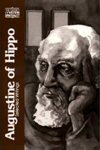
This collection of Augustine’s writings includes excerpts from his Confessions, On the Trinity, The City of God, and Homilies on the Psalms, along with the complete texts of the Rule of St. Augustine, On Seeing God, and On the Presence of God.
Augustine of Hippo (AD 354–430) was born in Thagaste, Numidia, in Northern Africa. He studied rhetoric in Carthage when he was 17. As an adult, Augustine abandoned the Christianity of his youth to pursue Manichaeism. Through his Manichaen connections, Augustine became professor of rhetoric at the imperial court of Milan. While in Milan, Augustine was heavily influenced by the bishop of Milan, Ambrose. Influenced by Ambrose and by the biography of St. Anthony, Augustine began exploring Christianity and eventually reconverted. He was baptized in 387 and returned to Africa. There he was ordained and became a well-known preacher and apologist for the Christian faith. He was eventually made Bishop of Hippo, an office he held until his death in 430. His works are collected in the Fathers of the Church: St. Augustine (30 vols.) collection.
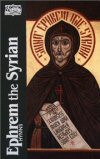
This volume contains a translation of a collection of Hymns of Christ, composed by Ephrem the Syrian, the most famous and prolific writer of the Syriac Fathers.
In this volume Dr. McVey offers three large collections of Ephrem’s Hymns, translated in a smooth and highly readable English.
—John Meyendorff, dean, St. Vladimir’s Orthodox Theological Seminary
Ephrem the Syrian (AD 306–373) was a fourth-century deacon, hymnographer, and theologian. He was known for writing lyrical teaching hymns, as well as poetry and biblical exegesis. His writings have remained popular to this day. He is venerated as a saint by many denominations, and is a Doctor in the Roman Catholic Church. He is credited with having written over three million lines, among the most influential of which are Hymns against Heresies and Commentary on Genesis and Exodus.
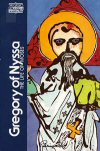
The Life of Moses has special significance because it reflects Gregory’s “spiritual sense” of the Scriptures. Gregory frames an immensely significant synthesis of the earlier Hellenistic and Jewish interpretive tradition in this work. He describes the spiritual ascent as taking place in three stages, symbolized by the Lord’s revelation of himself to Moses, first in light, then in the cloud and, finally, in the dark.
Gregory of Nyssa (AD 335–394) was a Christian bishop and saint. He was a younger brother of Basil the Great and a good friend of Gregory of Nazianzus. His significance has long been recognized in the Eastern Orthodox, Oriental Orthodox, Eastern Catholic and Roman Catholic branches of Christianity. Some historians identify Theosebia the deaconess as his wife, others hold that she, like Macrina the younger, was actually a sister of Gregory and Basil. His works are collected in the Fathers of the Church: Greek Fathers of the Nicene Era (35 vols.) collection.
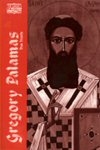
Gregory Palamas, monk, archbishop and theologian, was a major figure in fourteenth-century Orthodox Byzantium. This, his greatest work, presents a defense in support of the monastic groups known as the “hesychasts,” the originators of the Jesus Prayer.
Gregory Palamas (1296–1359) was a monk of Mount Athos in Greece and later the Archbishop of Thessaloniki known as a preeminent theologian of hesychasm. The teachings embodied in his writings defending hesychasm against the attack of Barlaam are sometimes referred to as Palamism, his followers as Palamites. Palamas is venerated as a Saint in the Eastern Orthodox Church.
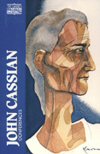
John Cassian’s Conferences is a study of the fourth and fifth century Egyptian ideal of the monk. At the turn of the sixth century the Roman rule that formed the bedrock of civil order was in decline. During the chaos of those years, there arose in the deserts of Egypt and Syria monastic movements that offered men and women a radical Christian alternative to dominant Roman society.
Like the rule of St. Benedict, his work was a protection against excess and a constant recall to that primitive simplicity where eastern spirituality met western.
—Owen Chadwick, professor of history, University of Cambridge
John Cassian (AD 360–435), also known as John the Ascetic, or John Cassian the Roman, was a monk and ascetic who first introduced eastern monastic ideas to the West. His works are collected in the Nicene and Post-Nicene Fathers Second Series, Volume XI.
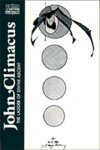
The Ladder of Divine Ascent was the most widely used handbook of the ascetic life in the ancient Greek Church. Popular among both laity and monastics, it was translated into Latin, Syriac, Arabic, Armenian, Old Slavonic, and other languages. Written while the author was abbot of the monastery of Catherine on Mount Sinai, it portrays the ascetical life as a ladder which each aspirant must ascend, each step being a virtue to be acquired, or a vice to be surrendered. Its thirty steps reflect the hidden life of Christ himself. Pierre Pourrat in his History of Christian Spirituality calls John Climacus the “most important ascetical theologian of the East.”
John Climacus, also known as John of the Ladder, John Scholasticus and John Sinaites, was a seventh century Christian monk at the monastery on Mount Sinai. He is revered as a saint by the Roman Catholic, Oriental Orthodox, Eastern Orthodox and Eastern Catholic churches.
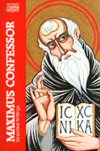
This volume includes a translation of four spiritual treatises of Maximus the Confessor, plus an account of his trial. Included are The Four Hundred Chapters of Love, Commentary on the Lord’s Prayer, Chapters on Knowledge, The Church’s Mystagogy, and Trial of Maximus.
Maximus the Confessor (AD 580–662) also known as Maximus the Theologian and Maximus of Constantinople (AD 580–662) was a Christian monk and theologian who spoke out against the monothelites. His works are collected in the Ancient Christian Writers: Post-Nicene Collection.
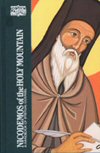
Nicodemos, a monk of Saint Athos dedicated to asceticism and learning, was one of the most influential Orthodox writers of the last two centuries. His Handbook, written during the Enlightenment in Europe, shares an exalted vision of human nature, but a vision that proceeds from the truths of revelation as interpreted by the Greek Fathers, not Descartes.
Nicodemos of the Holy Mountain (1749–1809), also known as Nicodemus the Hagiorite, was an Orthodox Christian monastic, author, canonist, author of numerous Lives of the Saints and liturgical poetry, and compiler/editor of pivotal Orthodox writings such as the Philokalia, The Rudder, and the collected writings of both St. Symeon the New Theologian and St. Gregory Palamas. Born in Naxos, Greece in 1749, Nicodemos was tonsured as a monk at the Dionysiou monastery on Mount Athos in 1775. He reposed in the Lord in 1809 and was glorified as a Saint by the Orthodox Church in 1955. His feast day is celebrated on July 14.
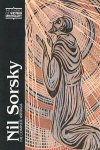
This volume contains a first-time translation from Russian into English of the complete writings of Nil Sorsky, a fifteenth-century Russian spiritual writer notable for bringing to Russia the spirituality of the early Church Fathers and mothers of the desert, the hesychasm spirituality of the heart.
Nil Sorsky was a leader of the Russian medieval movement opposing ecclesiastic landownership (known as the “Nonpossessors”). Nil Sorsky is venerated as a saint in the Russian Orthodox Church. His feast day is on the anniversary of his repose on May 7.
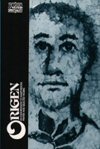
This volume consists of the important and influential writings of Origen, a Christian mystic and early Church Father. Origen was born in Alexandria and lived through the turbulent years during the collapse of the Roman Empire. Selections include An Exhortation to Martyrdom, Prayer, First Principles: Book IV, Prologue to the Commentary on the Song of Songs, and Homily XXVII on Numbers. This volume also includes a preface by Hans Urs von Balthasar.
As towering a figure as Augustine and Aquinas . . . his work is aglow with the fire of a Christian creativity which even the greatest of his successors burned merely with a borrowed flame.
Origen (AD 185–254) was a Christian scholar and presbyter in the third century. He is thought to have been born at Alexandria, and died at Caesarea. His works are available inside the Fathers of the Church: Fathers of the Ante-Nicene Era (23 vols.) collection.
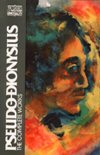
The real identity of the person who chose to write under the pseudonym “Dionysius the Areopagite” is unknown. Even the exact dates of the writings have never been determined. The texts themselves, though relatively short, are at points seemingly impenetrable and have mystified readers for centuries. Yet the influence of this shadowy figure on other mystical writers from the early middle ages on is readily discernible. The author’s formulation of negative theology stresses the impotence of human attempts to penetrate the “cloud of unknowing,” and is a perennial favorite of spiritually minded believers. Brief essays from top scholars exploring the main themes of Pseudo-Dionysius’ work accompany the primary texts, and include contributions by René Roques, Jaroslav Pelikan, Jean Leclercq, and Karlfried Froehlich.
Pseudo-Dionysius is an important and influential Christian author who wrote in the 5th or 6th century. His works were originally attributed to the Dionysius mentioned in Acts 17:34—an attribution that is disputed by most scholars today
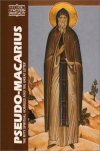
The writings of Pseudo-Macarius, a Syrian monk of the fourth century, bring to Western Christianity a holistic “heart” spirituality that offers a necessary complement to the “head” spirituality of the West. The Fifty Homilies, in the form of a practical, monastic pedagogy, reveal the typical traits of Eastern Orthodox asceticism, with particular emphasis on the spiritual combat, the action of the Holy Spirit, and the importance of interior prayer. The Great Letter discusses the purging of the passions to bring the Christian into a state of tranquility and integration, and addresses the monastic community with instructions regarding organization, humility, and prayer.
Pseudo-Macarius authored several works that were originally attributed to the Christian monk Macarius the Egyptian.
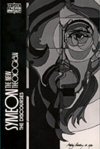
St. Symeon (942–1022), abbot, spiritual director, theologian and church reformer, was the great spiritual master of Eastern Christianity. His Discourses, the central work of his life, were preached to his monks during their Matins ritual.
Symeon the New Theologian (942–1022) was a Byzantine Christian monk. He was abbot of the Monastery of St. Mammas.
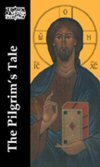
In this volume is the authentic text of one of the most famous examples of Russian spiritual literature, which deals with various aspects of the Jesus Prayer. A redaction of this text is thought to have been written no earlier than 1859.
Aleksei Pentkovsky studied at the Moscow Theological Seminary of the Russian Orthodox Church. He received a doctor of oriental ecclesiastical sciences degree from the Pontifical Oriental Institute in Rome in 1996. He is a reader at the Moscow Theological Academy of the Russian Orthodox Church and serves as executive secretary of the foundation, Russian Initiative for Culture.
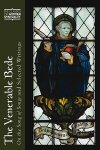
This volume contains the first English translation of Bede’s allegorical commentary On the Song of Songs, along with selections from his homilies, his Ecclesiastical History, and an introduction to his spirituality.
The Venerable Bede (AD 673–735) was a monk at the Northumbrian monastery of Saint Peter at Monkwearmouth, today part of Sunderland, England, and of its companion monastery, Saint Paul’s, in modern Jarrow, both in the Kingdom of Northumbria. Bede’s monastery had access to a superb library which included works by Eusebius and Orosius among many others. His writings are collected in the Works of the Venerable Bede (3 vols.).
This title is included in the following collections
You can save when you purchase this product as part of a collection.
Logos 7 Orthodox Gold Legacy L...
$849.99$849.99Classics of Western Spirituali...
$2,150.74$1,289.99Logos 8 Orthodox Diamond Legac...
$2,999.99$2,999.99Logos 9 Orthodox Diamond Legac...
$2,999.99$2,999.99
- $2,999.99
- $4,749.99$3,324.99
- $3,999.99
- $4,749.99
- $4,749.99
- $4,749.99
- $7,749.99
- $7,749.99
- $11,399.99
- $11,399.99
- $11,399.99
- $23,999.99$17,999.99
- $21,749.99
- $24,999.99
